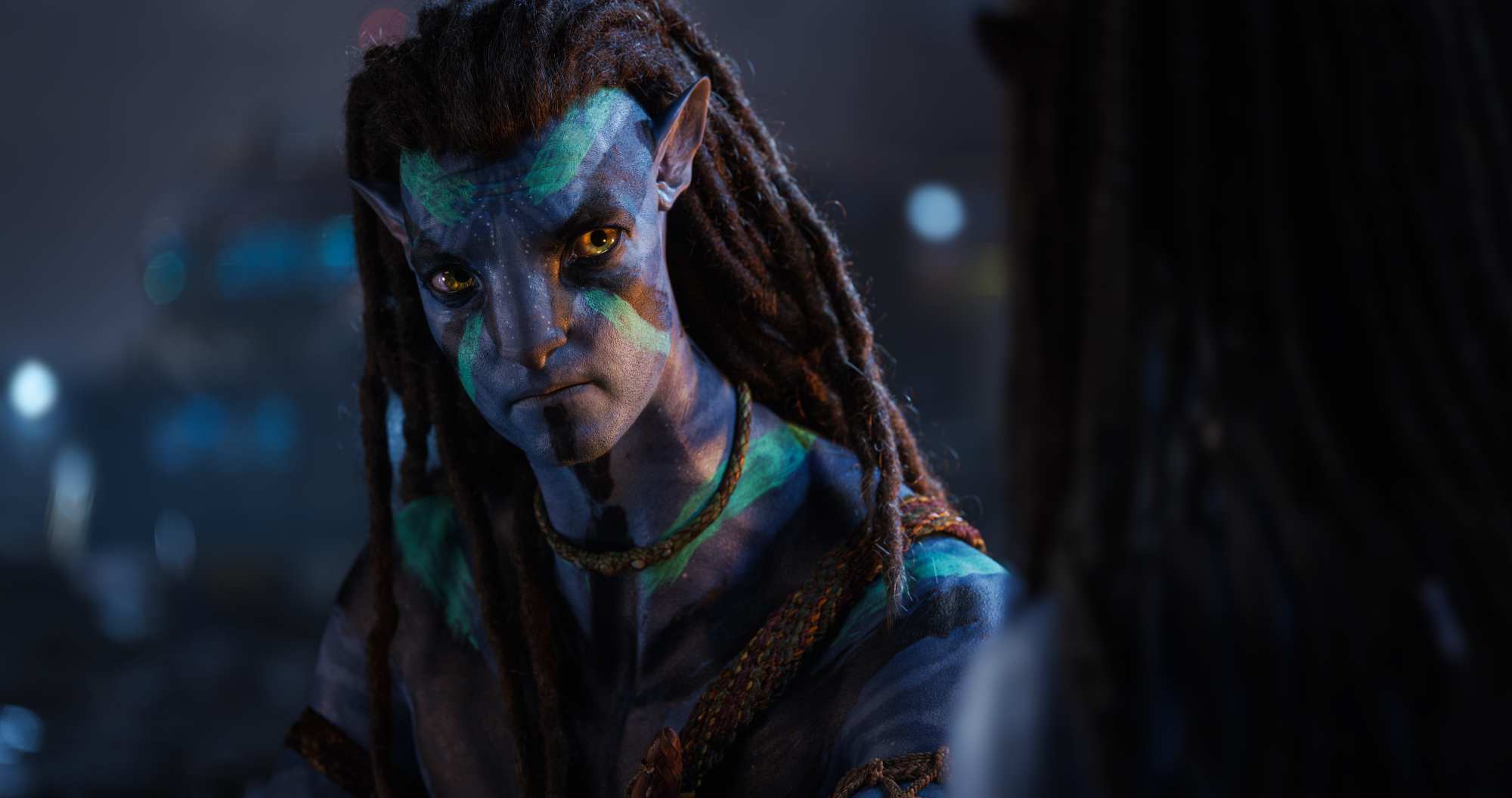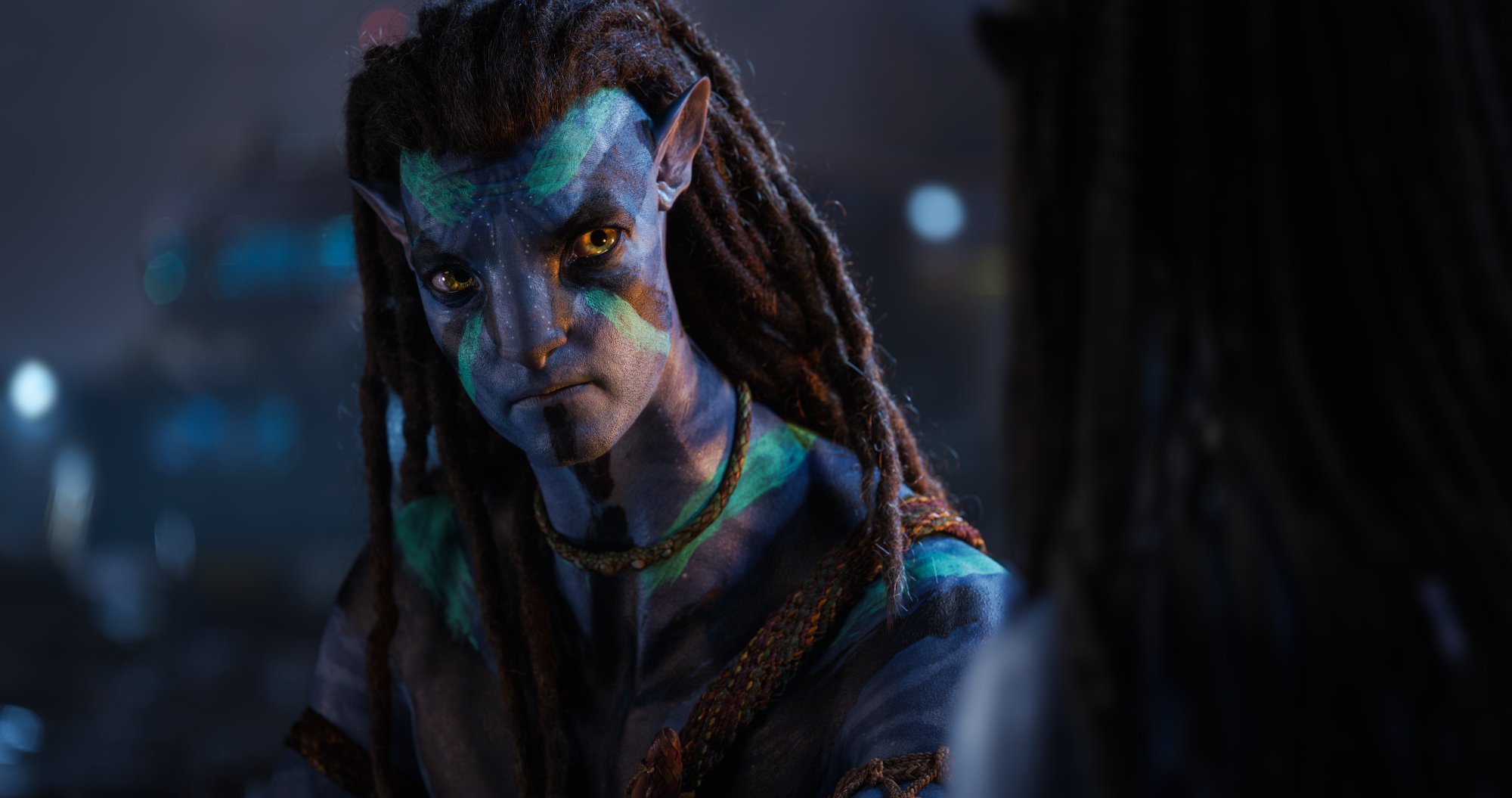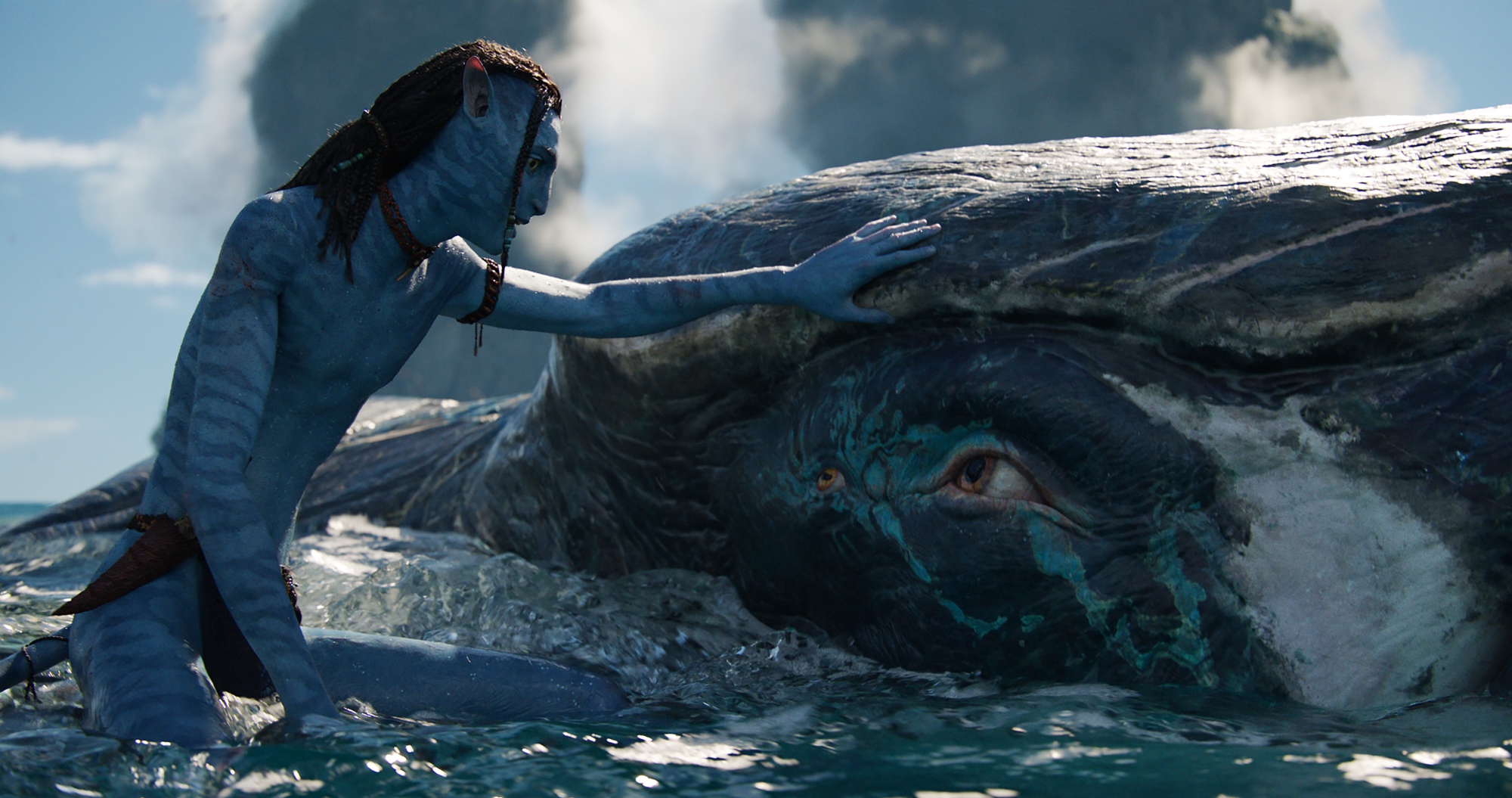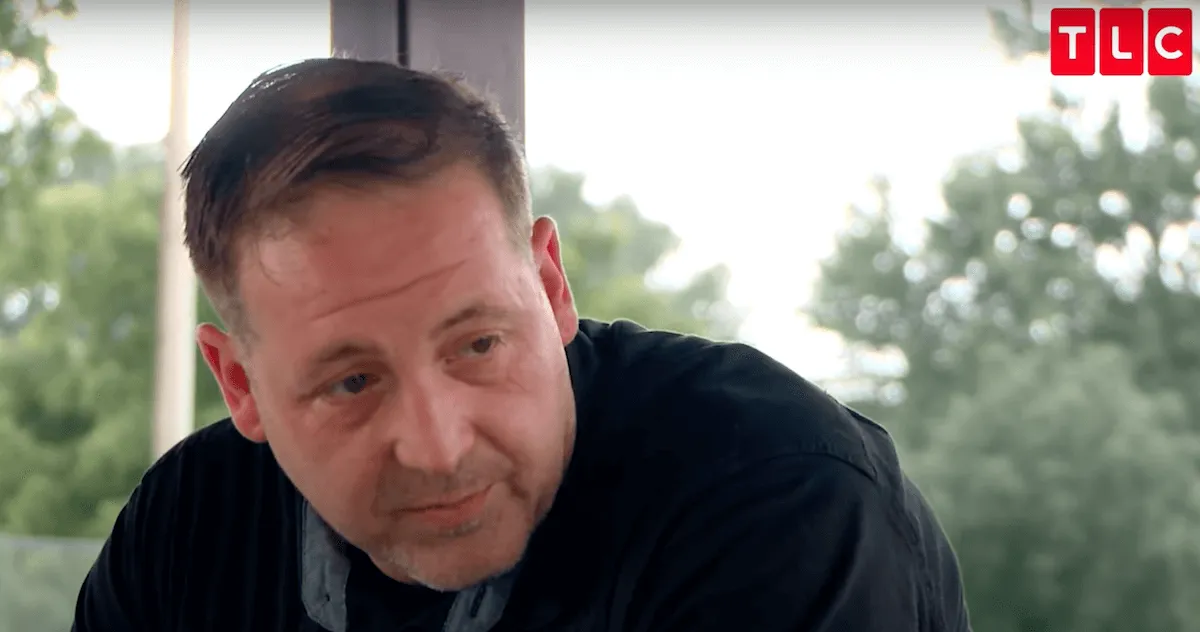
‘Avatar: The Way of Water’ Movie Review: James Cameron’s Sequel Is a Cinematic Tsunami
After 13 years, filmmaker James Cameron is bringing moviegoers back to the world of Pandora for Avatar: The Way of Water. There’s no question that he has an impressive track record with sequels ranging from Aliens to Terminator 2: Judgment Day, and he once again shows the potential of blockbuster filmmaking. Avatar: The Way of Water is a colossal visual and world-building journey, although it does take some narrative and character missteps.

‘Avatar: The Way of Water’ brings the war out of the jungle

Jake Sully (Sam Worthington) made Pandora his home, starting a family with Neytiri (Zoe Saldaña). Their household includes their children–Neteyam (Jamie Flatters), Lo’ak (Britain Dalton), Tuk (Trinity Jo-Li Bliss), and Kiri (Sigourney Weaver). A human child left behind named Spider (Jack Champion) also developed a particularly close connection with the family, believing himself to be one of the Na’vi.
However, the Sully family’s happiness comes to an abrupt end when humans, also called the “sky people,” make a return. War breaks out, forcing Jake to decide whether to stay and fight or run and seek safe refuge for his family. They meet with the Metkayina clan of the reefs, but soon realize that their way of life differs greatly from theirs.
James Cameron emphasizes what’s worth fighting for
After the events of Cameron’s first dive into Pandora, Avatar: The Way of Water establishes a status quo of happiness and peace. The Na’vi and the environment that they live in are in harmony, but that satisfaction ends in an instant. Similar to the first Avatar, the sequel continues to hammer in its message on environmentalism and positioning humanity as a greedy, cancerous species that spread from Earth to Pandora. The sky people seek to establish roots in a new world to call home, even though it’s clear that they lack the spatial awareness and respect that the Na’vi deeply embrace.
Cameron, Rick Jaffa, and Amanda Silver’s screenplay explores a new part of Pandora, leaving the jungle and navigating the story to the reefs. However, the folks living in the jungle compared to the river have physiological and cultural differences that separate their ways of life. As a result, the Sully family must learn to live in a new terrain with creatures and dangers previously unknown to them, as the presence of the sky people continues to loom over them.
Avatar: The Way of Water is largely about its characters seeking a sense of belonging and fighting to protect what feels like home, including other Na’vi who threaten that. The jungle versus the water folks is an obvious one, but stern fathers and disobedient sons is another theme that runs deep. Amidst the ongoing war, sons are treated more like soldiers than members of the family. As a result, Lo’ak and others feel like outcasts in the presence of their own community, giving them the desire to seek that approval from somewhere else.
‘Avatar: The Way of Water’ improves upon its predecessor

Cameron returns with a feast for the eyes that is nothing short of breathtaking. The 3D format is a fad that deserves to remain a thing of the past, but this is a tremendous use of the technology that fully immerses the viewer in both the dangers and the beauty of Pandora. The environments are layered to perfection. However, the high frame rate produces mixed results, occasionally having a stuttering effect during high-movement sequences like ones where creatures’ wings flap mid-air.
Avatar: The Way of Water sees the return of Colonel Quaritch (Stephen Lang) as the antagonist. Unfortunately, the character is no more compelling or less one-note than his previous iteration. Jake isn’t much more developed either, coming to many of the same realizations he already wrapped his mind around in the first film. There’s a lot of recycling going on here, but now he’s a father, which comes with its own challenges, and a plot that revolves more around the Sully younglings.
This sequel introduces an array of new characters and a whole lot more going on, improving on its predecessor. Cameron incorporates engrossing world-building that leaves one questioning – what else is out there in Pandora? The possibilities are endless. Avatar: The Way of Water is a visual marvel that proves mesmeric when it deviates away from what came before and embraces all that comes with its new terrain. Despite its flaws, Cameron certainly creates an astounding cinematic experience.
Avatar: The Way of Water swims to theaters on Dec. 16.


